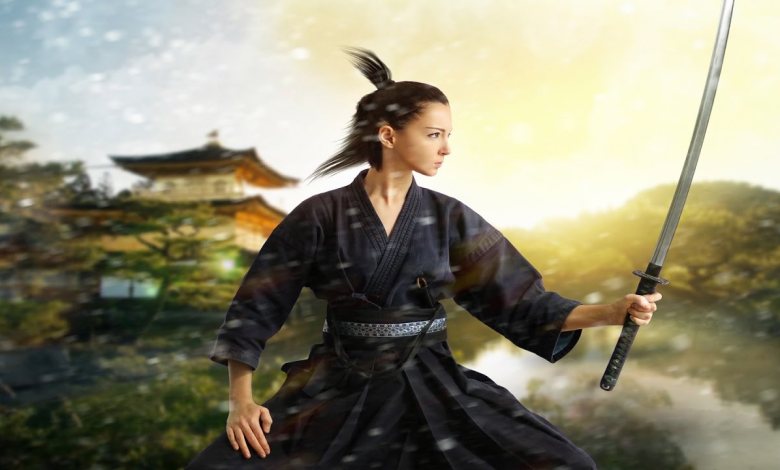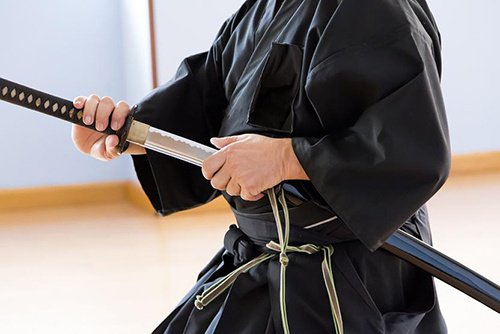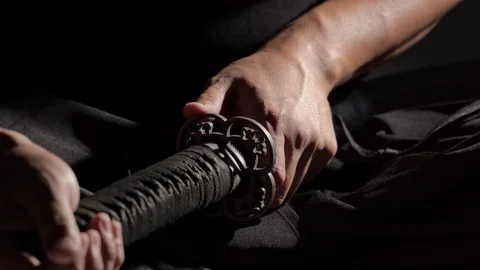The Katana’s Edge: Are Japanese Swords Double-Edged?

The katana is a weapon that represents a historical narrative, combining fire and steel with centuries of traditional practices. Its elegant curve and formidable reputation have made it an icon of Japanese culture and a symbol of the Samurai warrior. When people picture a sword from Japan, the katana, with its distinctive single-edged, curved blade, is almost always what comes to mind.
But this raises a fascinating question for enthusiasts and collectors alike: are there any Japanese swords that are both curved and double-edged? While the classic katana is famously single-edged, the world of Japanese swords is vast and filled with variations. This post will explore the design of the quintessential samurai sword, examining why it was crafted the way it was, and uncovering whether any double-edged versions exist in the annals of Japanese history.
What is a Katana?
A katana is a traditional Japanese sword characterized by its curved, single-edged blade, circular or squared guard (tsuba), and long grip designed for two-handed use. It is a weapon that has become synonymous with the samurai, the noble warriors of feudal Japan. The katana was more than just a tool for combat; it was considered the soul of the samurai, a piece of living history passed down through generations.
Historically, the katana was the primary weapon of the samurai, used in everything from duels to large-scale battles. Its design was perfected over centuries to deliver devastatingly effective cutting power. When you see a katana for sale in the UK, you’re looking at a modern reflection of this rich legacy, a design that has stood the test of time.
Understanding Double-Edged Swords
To appreciate the katana’s design, it’s helpful to understand its counterpart. A double-edged sword, as the name implies, has two sharpened edges running along the length of the blade. Classic examples include European longswords, Roman gladii, and various types of broadswords.
The primary advantage of a double-edged design is its versatility in combat. A warrior can cut effectively with both forward and backward motions without needing to reposition the blade. This makes it highly adaptable in close-quarters combat where fluid, multi-directional attacks are necessary. However, this design often comes with a trade-off in structural strength compared to a single-edged blade with a thick, supportive spine.
The Katana Edge: A Masterclass in Design
So, why are traditional katana swords single-edged? The answer lies in their intended purpose and the unique forging techniques used to create them.
The katana was designed primarily as a cutting weapon. The combination of a single, razor-sharp edge (ha) and a thick, soft spine (mune) is a work of genius. This differential heat treatment process, which creates the visible temper line known as the hamon, results in a blade that can hold an incredibly sharp edge while remaining flexible enough to absorb the shock of impact without shattering. The thick spine provides the structural integrity needed to deliver powerful, slicing cuts.
A single-edged design allows the swordsmith to focus all the forging effort into creating one perfect cutting surface, resulting in a blade optimized for its primary function.
The Purpose of the Katana’s Curvature
The elegant katana curvature, or sori, is not just for aesthetics; it is a critical functional element. This curve serves two main purposes:
- Drawing Speed:The curve allows a samurai to draw the sword from its scabbard (saya) and execute a cutting motion in one fluid, lightning-fast movement. This technique, known as iaijutsu, was a vital skill for a warrior.
- Cutting Efficiency:The curve enhances the slicing action of the blade. As the sword moves through a target, the curvature ensures that more of the blade’s edge makes contact, resulting in a cleaner and more efficient cut with less resistance.
The curve and the single edge work in perfect harmony. The curvature positions the single edge for an optimal slicing angle, maximizing the formidable cutting power that samurai swords are famous for.
Exceptions and Misconceptions: The Double-Edged “Katana”
One of the most common questions from those new to Japanese swords is whether a double-edged katana exists. The simple answer is that a traditional, historically accurate katana is never double-edged.
However, there are rare exceptions and variations in the broader family of Japanese swords. A notable example is the kogarasu maru, a unique Japanese sword that is considered a national treasure. This blade is double-edged only near the tip, while the rest of the blade remains single-edged. It is a transitional design and not a true katana, representing an earlier style of sword-making.
Another variant is the kissaki moroha zukuri style, which features a double-edged, symmetrical point on an otherwise single-edged blade. This design enhances thrusting capabilities but is still fundamentally a single-edged sword.
Any fully double-edged, curved sword marketed as a “katana” is almost certainly a modern fantasy creation, not a reflection of historical Japanese craftsmanship.
Historical Context and Combat Style

The design of the katana is intrinsically linked to the combat styles and philosophy of the samurai. The samurai code, Bushido, emphasized honor, precision, and decisiveness. Combat was often settled with a single, perfect strike.
The katana’s design facilitated this. The fighting styles developed by the samurai, such as kenjutsu, focused on powerful, precise cuts aimed at disabling an opponent swiftly. The single edge and curved blade were perfectly suited for this purpose, allowing for unmatched cutting ability.
Modern Katana Replicas
Today, there is a thriving market for modern katana swords in the UK and globally. These replicas range from decorative, non-functional pieces to “battle-ready” swords forged using traditional methods.
When searching for swords in the UK, it’s important to understand the differences in quality. An authentic-looking modern katana will adhere to the traditional single-edged, curved design. High-quality replicas are often handmade, featuring full-tang construction, properly forged steel, and a visible hamon. These details are a testament to the enduring legacy of the original craftsmen. Be wary of sellers offering “double-edged katanas,” as these are not authentic representations of this historical weapon.

The Final Cut
To summarize, the traditional Japanese katana is a masterfully crafted weapon defined by its single-edged, curved blade. This design is the result of centuries of refinement, purpose-built for the specific combat needs and philosophy of the samurai. While rare, double-edged Japanese swords do exist, they are not katanas and represent different historical periods or experimental designs.
The katana’s legacy as a single-edged blade is a testament to the principle of perfecting a tool for a specific task. Its design is not a compromise but an optimization, resulting in one of the most effective cutting swords in history.
Do you have any questions about the katana or other Japanese swords? Share your thoughts in the comments below!




